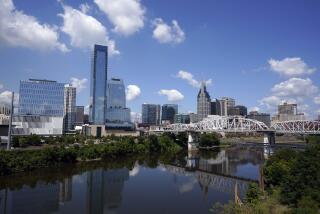Op-Ed: The problem with the cost of college isn’t the price but who’s paying the bill

Off campus living costs desc: According to Zillow, here are the median off-campus rents at the top 10 universities.
Over the next two months, high school seniors will find out which colleges on their wish lists came through with acceptances. But the tensions won’t end when the admission letters arrive. As paying the bill for a four-year degree becomes a reality, families will struggle to understand why higher education is so expensive and how they are going to afford it.
Complaints that college fees are too high often reflect confusion over the difference between the cost of higher education and its price to students. Cost is a function of salaries for faculty and staff and the infrastructure expenses required to educate students. Price refers to tuition. Most people don’t realize it, but the cost of educating a student has been restrained. According to the Higher Education Price Index between 2002 and 2014, college costs rose annually at a rate only about three-quarters of a percent higher than the consumer price index. Expenditure per student fell in many states.
Overall at the University of California, expenditure per student has fallen by more than 20% since 1991 while tuition has risen (UC proposes to raise it again for the 2017-18 school year). Both actions are the consequence of decreasing state support for public higher education; since 2008, state support has fallen by more than 18% per student. The cost of college has been restrained but someone still has to pay.
According to the College Board, at four-year public universities, average annual in-state tuition in 2015 ranged from $4,890 to $15,160, with the national average at $9,410. It’s not an unreasonable charge. Consider this comparison: According to the National Assn. of Child Care Resource and Referral Agencies, the average annual cost of day care in the U.S. is $11,410. The tuition at public universities is about the same as a low-priced day-care center.
Whenever a state legislature decreases its support for higher education it is deciding that students should pay more.
These figures are also the published tuition amount, which is akin to the sticker price on a car. Few pay the full freight. The real price is the published tuition minus financial aid. Nearly two-thirds of all college students receive financial aid. Average financial aid in 2015 was $5,430, which would make the average net tuition at public universities $3,980 per year, an even more reasonable price for a bachelor’s degree.
So why all the controversy? First, room and board is expensive and can double the cost of attending college. But whether you’re in college or not, you will have living expenses. There are choices; many communities have local universities and students can live at home. The high cost of living is outside a college’s control.
What’s really at issue in the college-cost controversy isn’t the price but who should pay for it: students, taxpayers or donors. The protests over tuition increases have come about because of a major shift that is occurring in who pays. Whenever a state legislature decreases its support for higher education it is deciding that students should pay more.
But not all students pay more. Most public universities have a “return to aid” policy that sets aside a percentage of tuition for financial aid for students who have college potential but can’t afford it. At UC, 33% of tuition dollars are used for aid. As state support has waned, universities including UC are redistributing tuition dollars from middle- and upper-income to low-income students.
At UC, about 40% of undergraduates pay no tuition at all. Middle-income students are partially subsidized and most families with an annual income above $125,000 pay full tuition. A recent study shows the effects of this university-designed redistribution: As many as 78% of students who enrolled in the 1990s at major public universities have seen their status improve, moving from the bottom fifth of national income to the top three-fifths. Access to education does lead to low-income families finding a path out of poverty.
Society, through significant cuts in public support, is decreasing its prioritization of higher education. Rather than every taxpayer bearing the cost of making public higher education widely available, wealthier families with college-age children are subsidizing less fortunate families. This scenario is neither equitable nor socially optimal. The benefits of access are shared by society as a whole; the costs should be shared as well.
There is another problem with the way we are making higher education accessible. Tuition is not rising by a large enough amount to replace the significant decreases in state support. Faculty, program and infrastructure cuts are hurting the quality of education.
Public higher education in the U.S is not too expensive, but the balance between cost, price and redistribution is tenuous. If legislatures — and voters — further lower their prioritization of higher education, the system itself will be at risk. Not only will fewer low-income students gain access to the advantages of a college education, the quality of public higher education in the U.S., which has long been recognized as the best such system in the world, will surely erode.
Andrew J. Policano is a professor of economics and public policy and former dean at UC Irvine’s Paul Merage School of Business. He is author of “From Ivory Tower to Glass House: Strategies for Academic Leaders During Turbulent Times.”
Follow the Opinion section on Twitter @latimesopinionand Facebook
More to Read
A cure for the common opinion
Get thought-provoking perspectives with our weekly newsletter.
You may occasionally receive promotional content from the Los Angeles Times.






